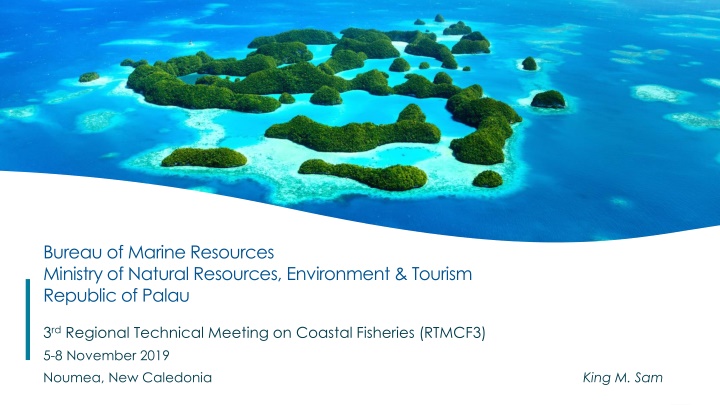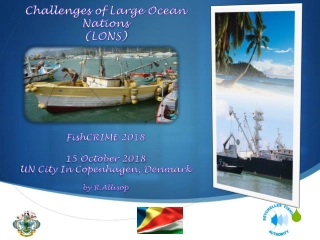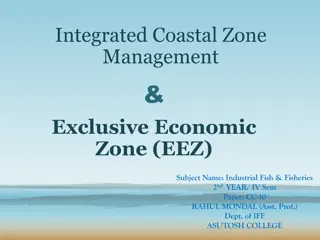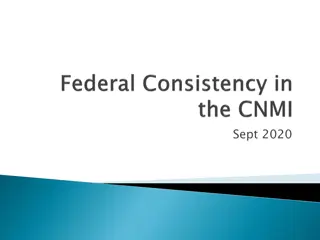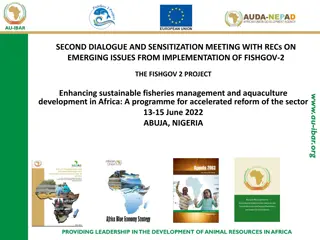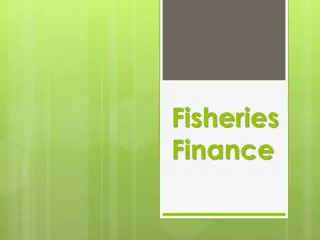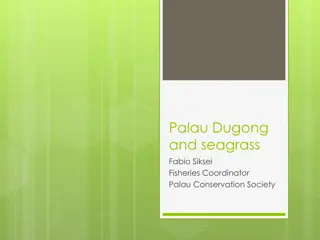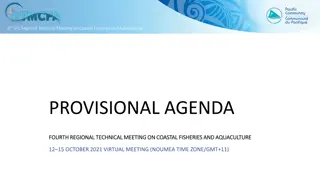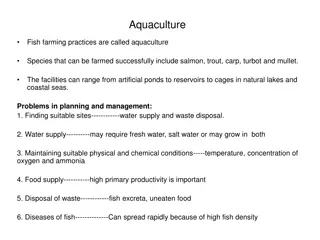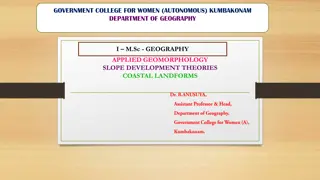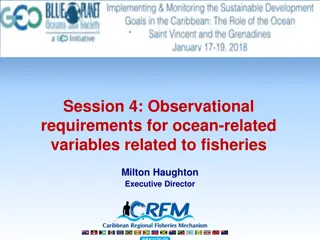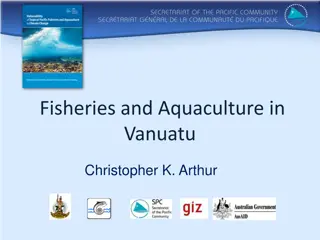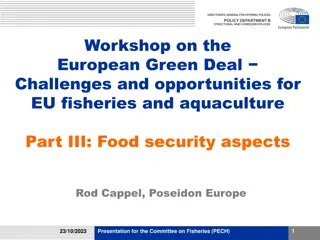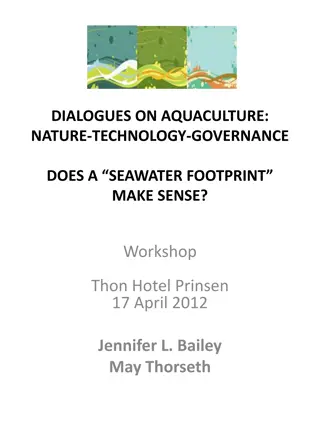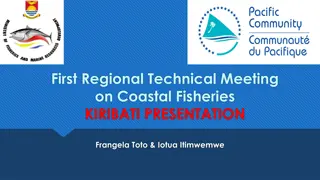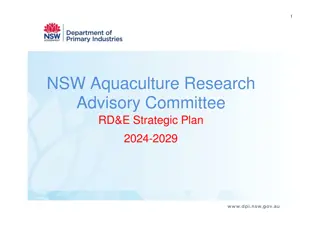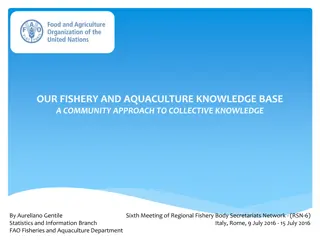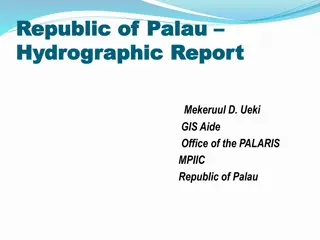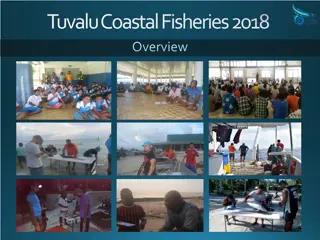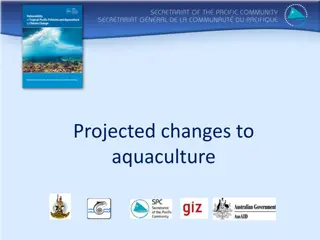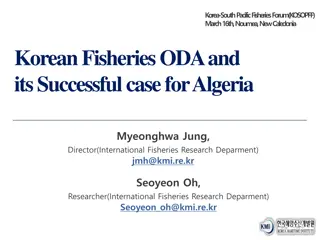Coastal Fisheries and Aquaculture Development in Palau: Priorities and Progress
The Bureau of Marine Resources in Palau has identified key technical priorities for coastal fisheries and aquaculture development. These priorities include updating strategic plans, strengthening institutional frameworks, establishing data management programs, and enhancing aquaculture capabilities. Progress has been made since the previous meeting in 2018, with initiatives such as developing aquaculture farms, supporting fish markets, partnering with community groups, and raising awareness on sustainable fishing practices. The focus remains on sustainable management, conservation, and economic growth in the marine sector.
Download Presentation

Please find below an Image/Link to download the presentation.
The content on the website is provided AS IS for your information and personal use only. It may not be sold, licensed, or shared on other websites without obtaining consent from the author.If you encounter any issues during the download, it is possible that the publisher has removed the file from their server.
You are allowed to download the files provided on this website for personal or commercial use, subject to the condition that they are used lawfully. All files are the property of their respective owners.
The content on the website is provided AS IS for your information and personal use only. It may not be sold, licensed, or shared on other websites without obtaining consent from the author.
E N D
Presentation Transcript
Bureau of Marine Resources Ministry of Natural Resources, Environment & Tourism Republic of Palau 3rdRegional Technical Meeting on Coastal Fisheries (RTMCF3) 5-8 November 2019 Noumea, New Caledonia King M. Sam 1
Coastal Fisheries Technical Priorities Highest priorities for coastal fisheries technical needs: 1. Updated Strategic Plan for Bureau of Marine Resources, noting: Management arrangements for PNMS (multiple implementing agencies in MNRET, MOJ, PICRC) Integrated fisheries management with state governments (scale up NRFC) Institutional strengthening (i.e., research, monitoring, capacity building) Sustainable financing 2. Established data management program, taking into consideration: Development of SOPs Inclusive of state governments, relevant agencies, markets (import/export), road-side vendors, etc. Clear links to research (internal/external) Recovery plans for threatened/exploited species and commercial exploitation 2
Aquaculture Technical Priorities Highest priorities for aquaculture technical needs: 1. Full utilization of Palau Mariculture Demonstration Center, strengthening Fin-fish program Establish consistent supply of giant clams for farmers, MPAs, added value products, etc. Testing the feed for aquaculture fin-fish Streamline collaborative efforts with technical partners (PCC, PICRC, etc.) Increase the production capabilities for rabbitfish Propagation experts for other species such as milkfish, shrimp and sea cucumber species 2. Nationally Integrated Aquaculture Program Coordinated approach (using GIS, EAs, etc.) across states and communities; national framework for appropriate sitting for large commercial scale floating-cage aquaculture for fin fish Established procedures with pertinent regulatory agencies, institutions (financial, research) & states Inventory system in place with recovery plans for threatened/exploited species 3
Actions Taken Since RTMCF2 (Nov 2018) Northern Reef Fisheries Project Continued development of aquaculture farms supporting fishermen by the introduction of floating cage for rabbitfish Establishment of NRFC fish market, supporting the uptake of pelagic fish Establish partnership between community groups to complement value added marine and aquaculture and farm products Resume construction of giant clam farms as alternative livelihoods for rural fishermen, in light of the opening of the new giant clam production center Secured fishing vessel from Japan Government to support pelagic fisheries operation in the Northern Reef OFCF to provide technical support in the survey and assessment of effectiveness of Palau s FADs network Established Fisheries Working Group (PICRC, TNC, PCS, BMR) Choose Pelagics Initiative Presidential directive requiring government functions and food service programs to choose pelagics Incentivizing fishers to supply pelagic fish consistently to the market (i.e., selling pelagics in return for data) Community awareness on impacts to health and environment concerning reef fish vs. pelagics 4 4
Coastal Fisheries Issues or Challenges Integration of coastal and oceanic fisheries (MNRET, MOJ, PICRC, State Governments) Local expertise (i.e., research & monitoring, legal/policy support) Sustained education & outreach program Scaling up of innovative programs such as NRFC, requires sustained commitment and a long-term strategy 5 5
MESULANG 6
